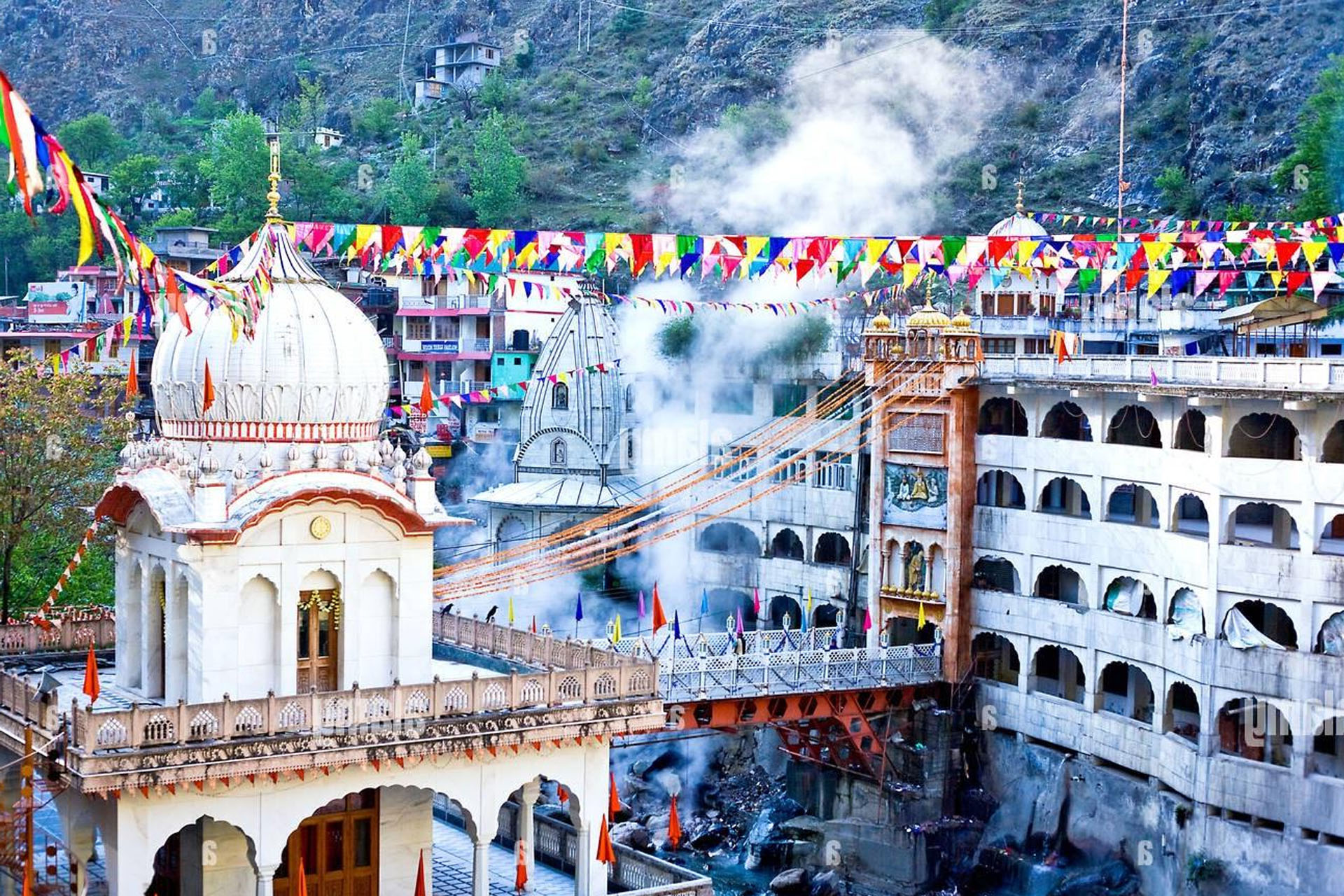
A Sacred Pilgrimage in the Himalayas
Manikaran Sahib
Manikaran Sahib, located in the Parvati Valley of Himachal Pradesh, is a revered Gurudwara that holds immense religious significance for Sikhs and Hindus alike. Situated at an altitude of 1,760 meters (5,774 feet), along the banks of the Parvati River, this spiritual site is not only famous for its religious importance but also for its stunning natural surroundings and the presence of natural hot springs.
Religious Significance:
Sikh Tradition: According to Sikh history, Guru Nanak Dev Ji, the first Sikh Guru, visited Manikaran during the 16th century. Accompanied by his disciple Bhai Mardana, Guru Nanak is believed to have performed several miracles here, one of which involved the boiling of food using the natural hot springs. This miraculous event is commemorated by the tradition of preparing Langar (community meal) in the hot water springs of Manikaran.
Hindu Tradition: For Hindus, Manikaran holds deep religious significance as well. It is believed that Lord Shiva and Goddess Parvati once meditated here for over 11,000 years. According to legend, during their stay, Goddess Parvati lost one of her earrings (Manikaran). When it fell into the water, it was impossible to find, which is said to have led to the formation of the hot springs in the area.
Key Attractions of Manikaran Sahib:
The Gurudwara Complex:
The Manikaran Sahib Gurudwara is a place of deep spiritual resonance for Sikhs. Pilgrims visit the Gurudwara to pay their respects, offer prayers, and partake in the Langar, which is prepared using the hot water from the springs. The serenity of the place, combined with the flowing river and lush mountains, creates a peaceful atmosphere.
Inside the Gurudwara, the Guru Granth Sahib, the holy scripture of the Sikhs, is recited continuously, filling the air with spiritual vibrations.
Natural Hot Springs:
One of the most remarkable features of Manikaran is the presence of natural hot springs. These springs are believed to have healing properties due to the high sulfur content, which can help alleviate skin and respiratory ailments.
Visitors can take a dip in the hot water pools, which are divided into separate sections for men and women. Bathing in these hot springs is considered purifying by many devotees.
Langar (Community Kitchen):
- The concept of Langar at Manikaran is a beautiful representation of equality and selfless service. The food, which is served to all visitors regardless of faith, caste, or status, is cooked in large vessels using the boiling hot water from the springs. The unique way the food is prepared and the communal spirit in which it is served make the Langar a highlight of the Gurudwara experience.
Manikaran Temple:
- Along with the Gurudwara, Manikaran is home to several Hindu temples, including shrines dedicated to Lord Shiva, Ram, and Vishnu. These temples, alongside the Gurudwara, make Manikaran a shared pilgrimage site for both Hindus and Sikhs.
Stunning Natural Beauty:
- Nestled in the Parvati Valley, Manikaran is surrounded by snow-capped mountains, lush greenery, and the gushing Parvati River. The natural beauty of the region, combined with the spiritual significance, makes it a tranquil retreat for those seeking peace and rejuvenation.
The Legend of the Lost Mani:
- According to Hindu mythology, when Goddess Parvati lost her earring in the water, Lord Shiva became distressed and ordered his attendant to find it. When the serpent god, Sheshnag, uncovered the earring from the depths of the water, hot springs are believed to have emerged as a result. This legend is deeply embedded in the folklore of Manikaran and contributes to its name, with “Mani” meaning jewel and “Karan” meaning ear.
Best Time to Visit:
April to October: The summer and autumn months are ideal for visiting Manikaran Sahib. During these months, the weather is pleasant, and the roads leading to the Gurudwara are open and easily accessible.
Winter Season (November to March): The winters can be cold, with snowfall in the surrounding areas. While the Gurudwara remains open year-round, the roads can be challenging to traverse due to snow and ice, though the hot springs remain active.
Nearby Attractions:
- Kasol: Located just 4 km from Manikaran, Kasol is a popular tourist spot known for its scenic beauty, backpacker culture, and as a starting point for treks to nearby villages like Tosh and Malana.
- Parvati River: The pristine waters of the Parvati River flow near the Gurudwara, offering a serene and picturesque setting for meditation and relaxation.
- Trekking: The surrounding hills and valleys of Manikaran are ideal for trekking and hiking, with trails leading to scenic spots such as Kheer Ganga and Pin Parvati Pass.
Things to Keep in Mind:
- Dress Modestly: Visitors should cover their heads (scarves are provided at the Gurudwara) and dress respectfully when entering the Gurudwara.
- Altitude: Manikaran is located at a moderate altitude, and while altitude sickness is unlikely, staying hydrated and taking it easy is advised.
- Respect Traditions: The Langar is free for all, and visitors are encouraged to participate respectfully. It is customary to sit on the floor while eating in the Langar Hall.
Conclusion:
Manikaran Sahib is not just a place of pilgrimage but also a symbol of unity, spirituality, and healing. The combination of religious history, miraculous hot springs, and the tranquil beauty of the Himalayas make it a must-visit destination for both devotees and tourists. Whether you’re there for spiritual fulfillment or simply to enjoy the natural hot springs, Manikaran promises an unforgettable experience.
